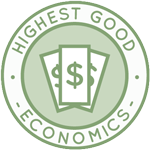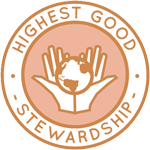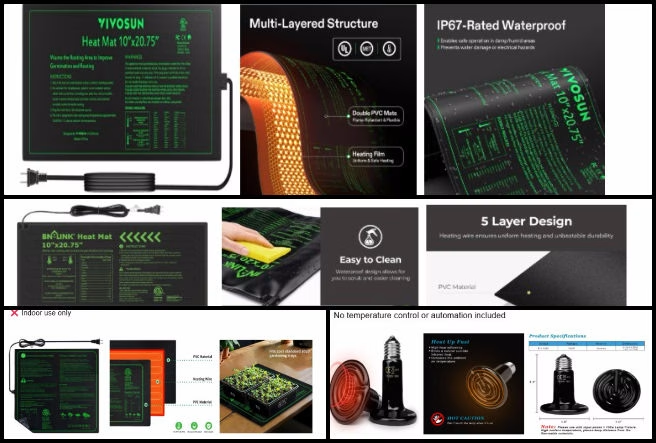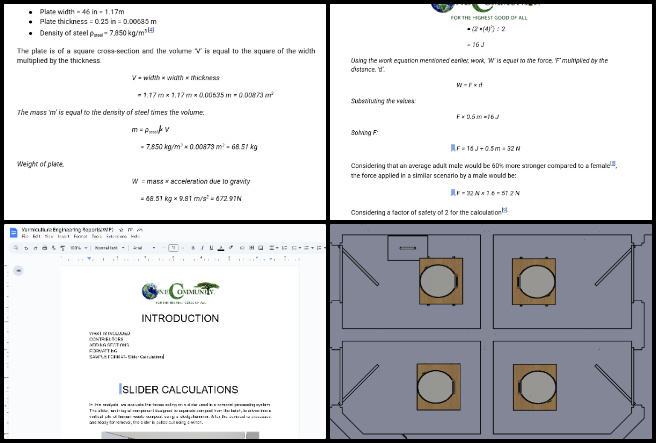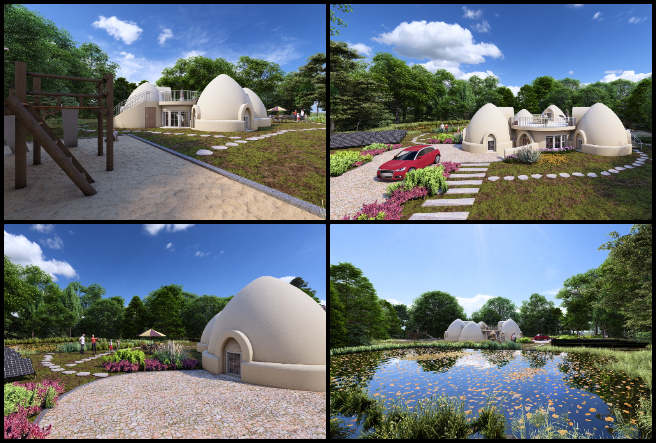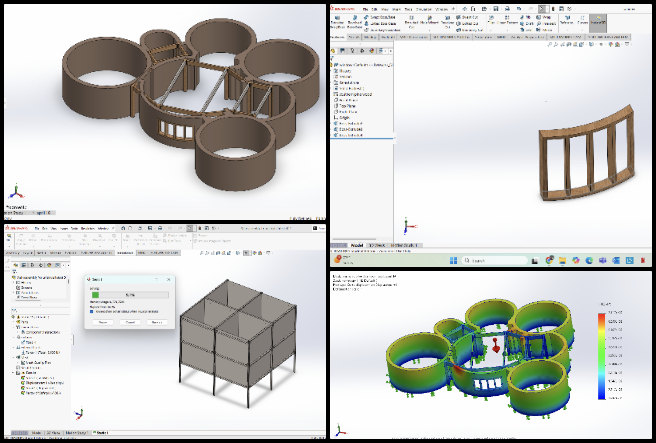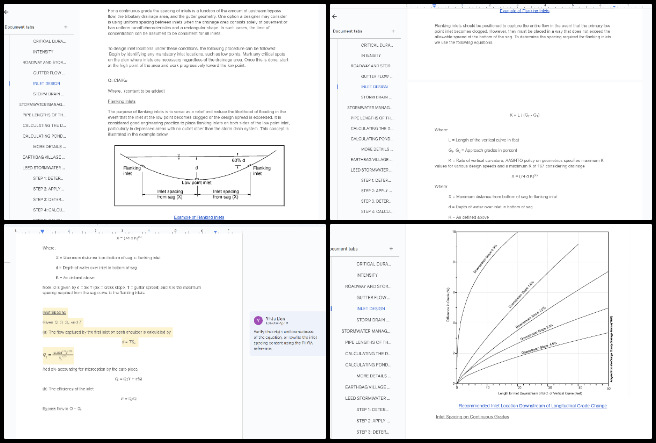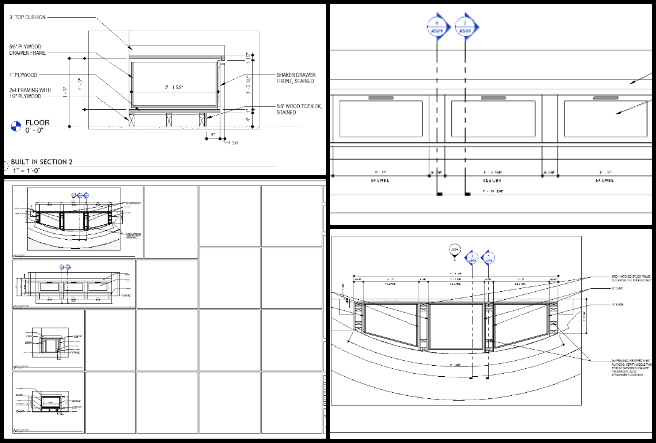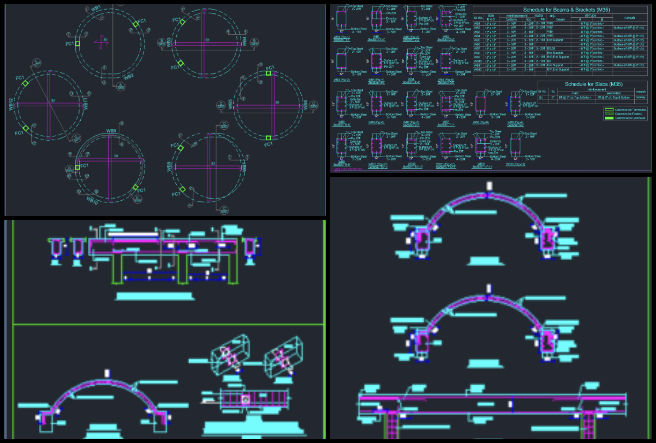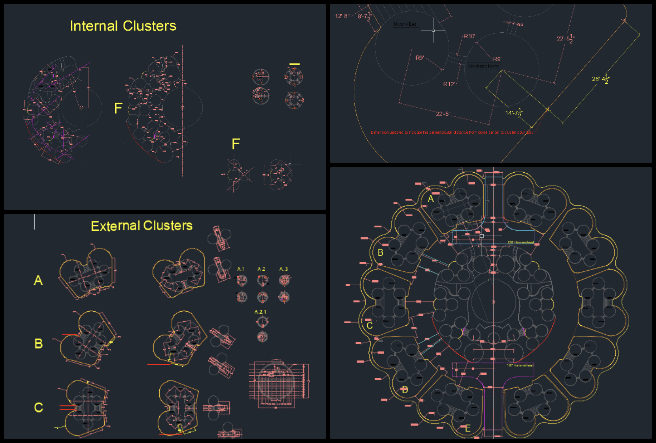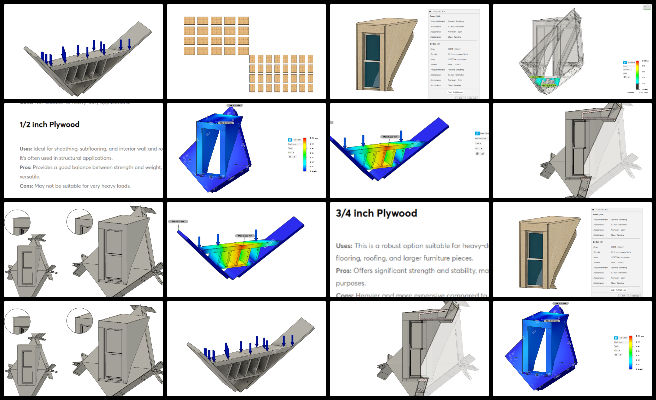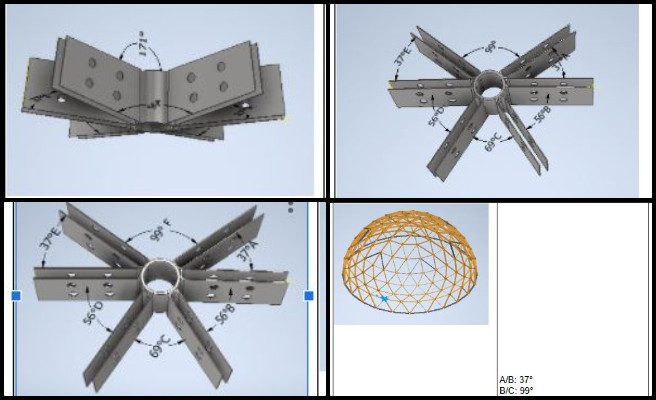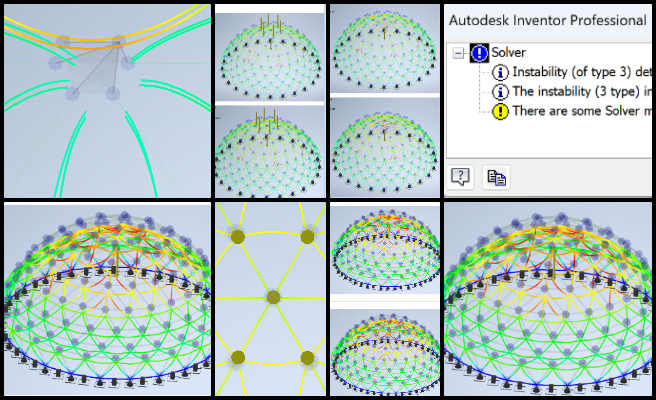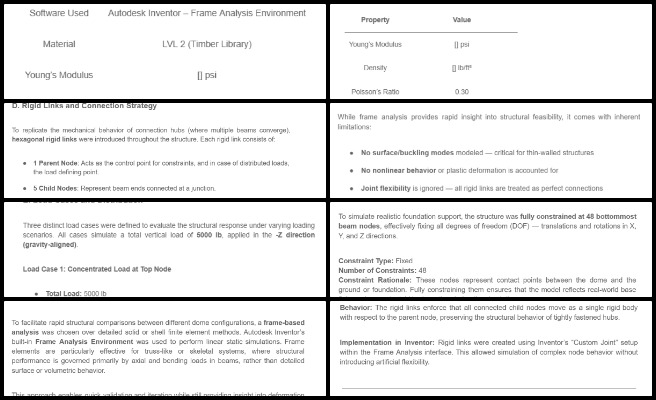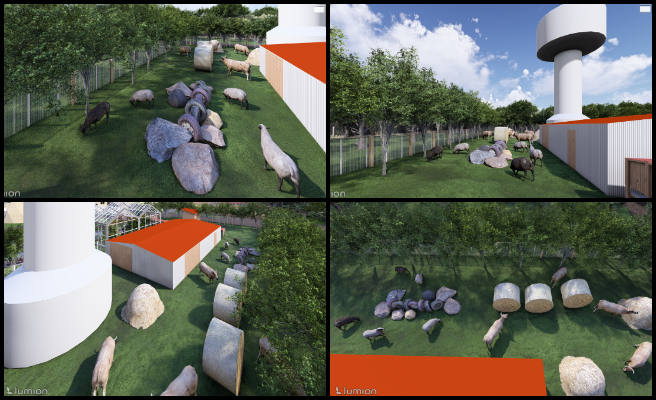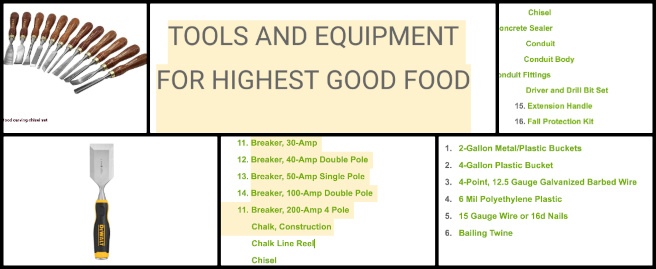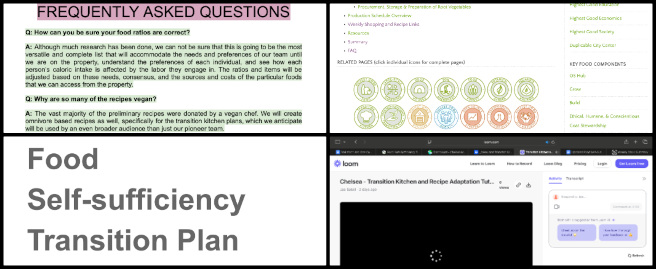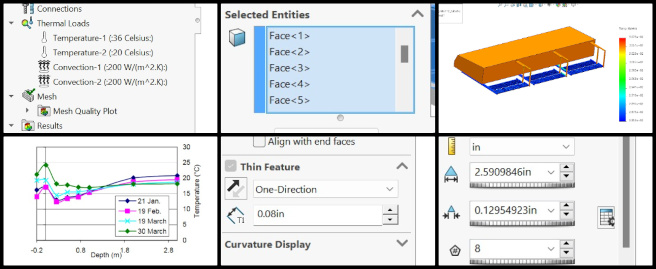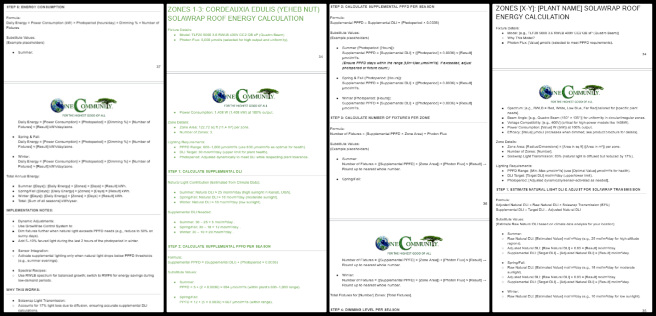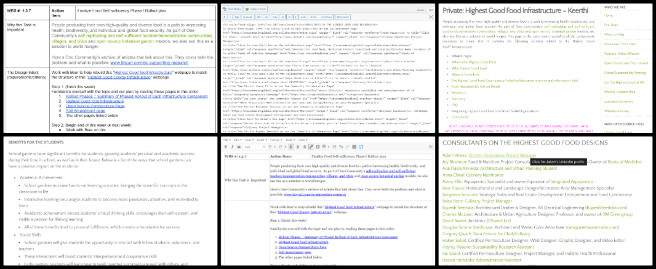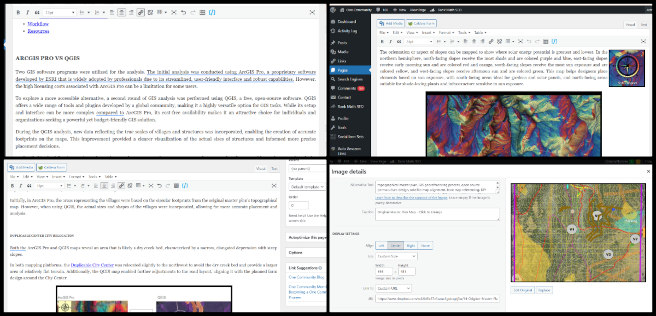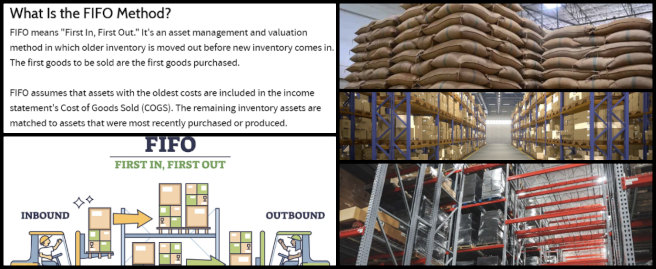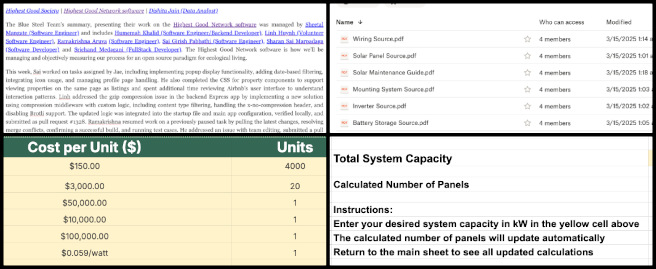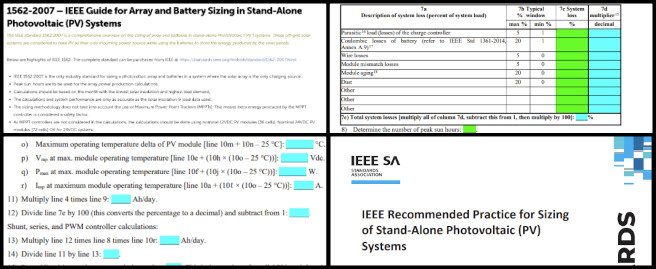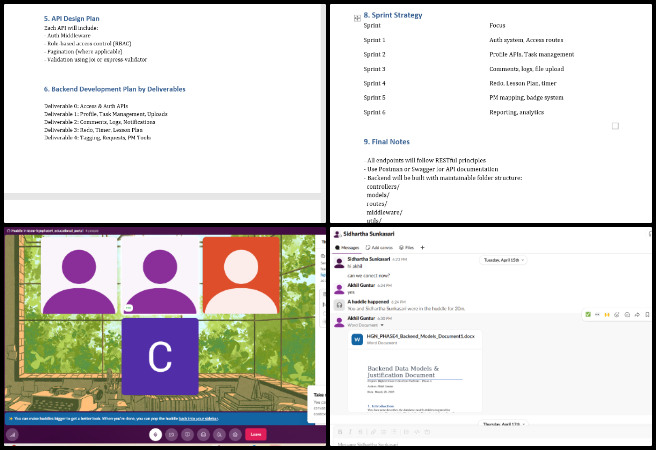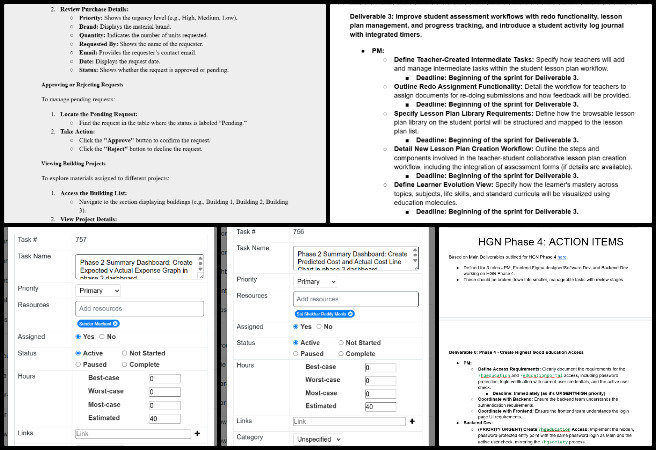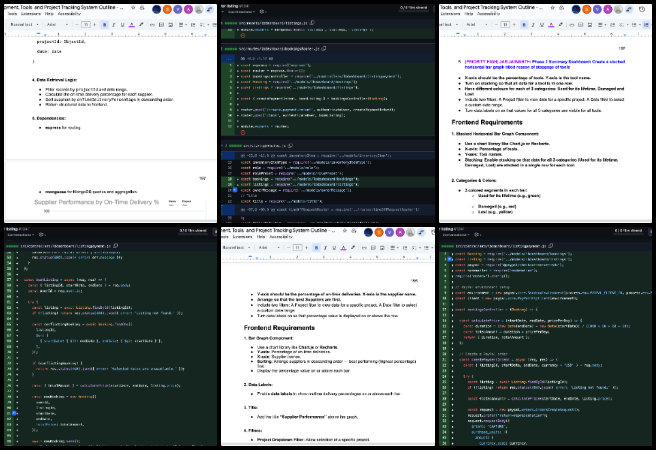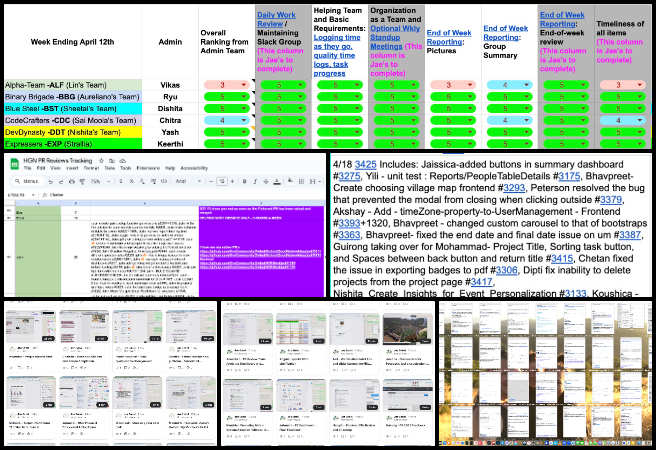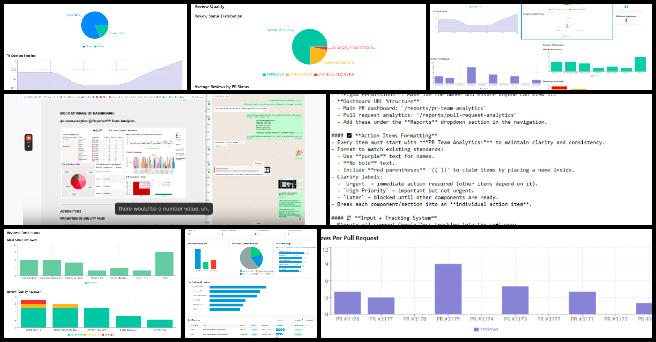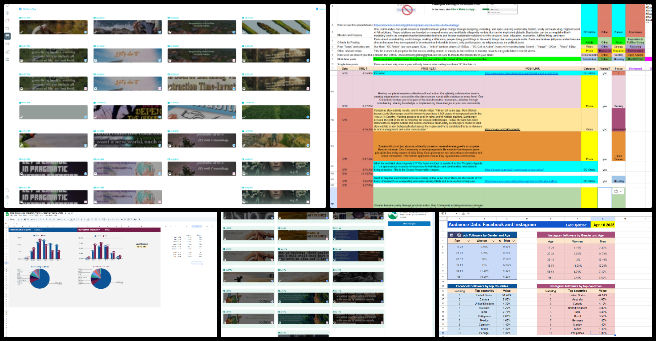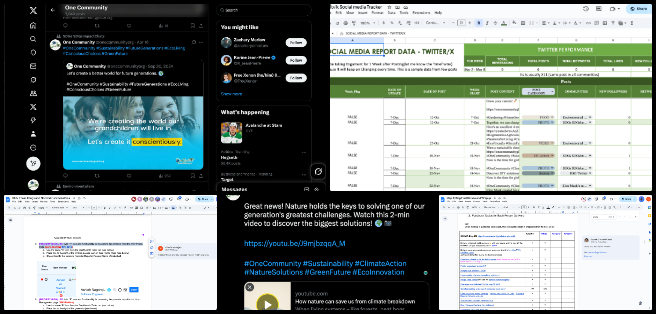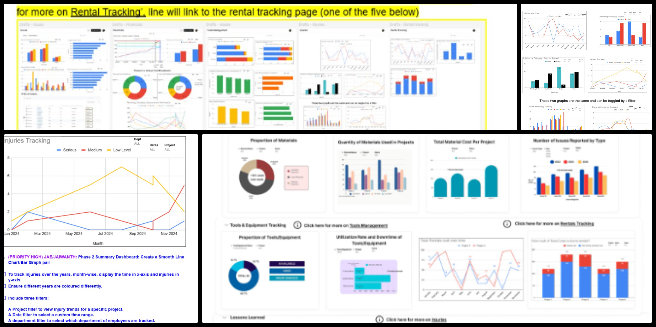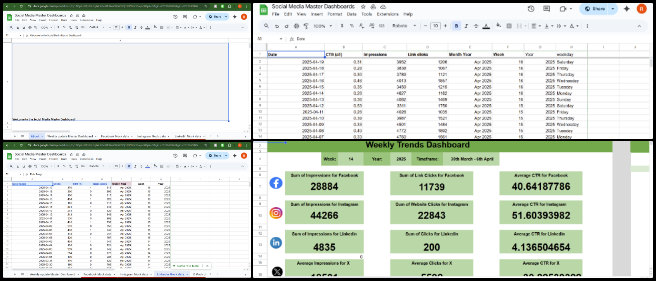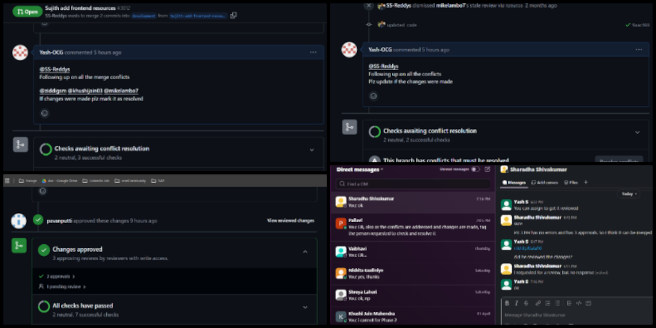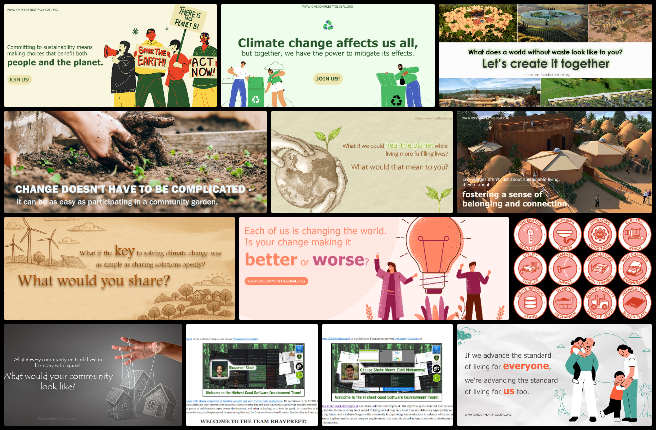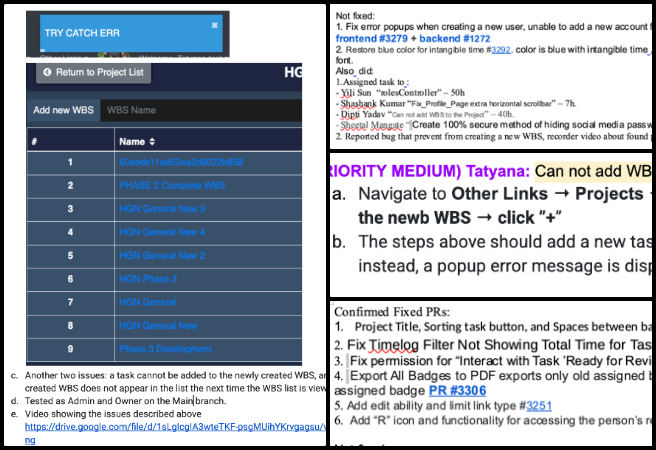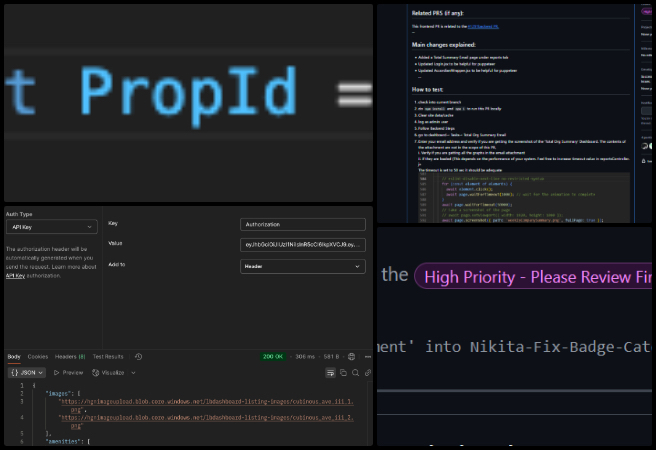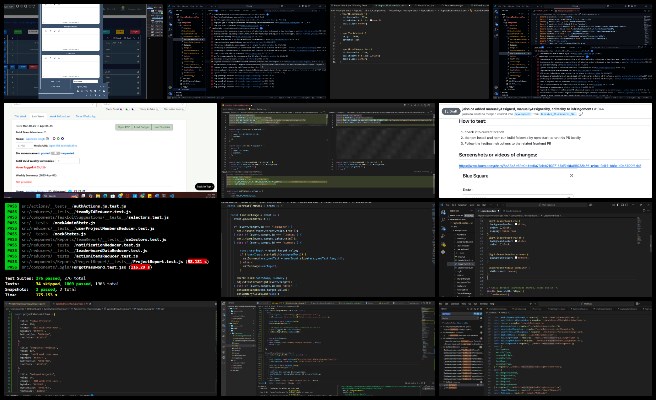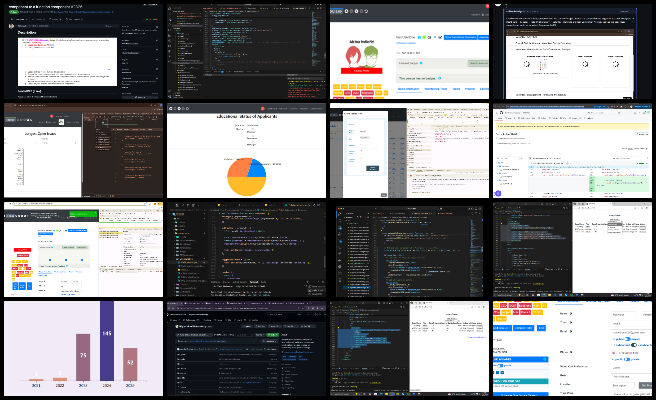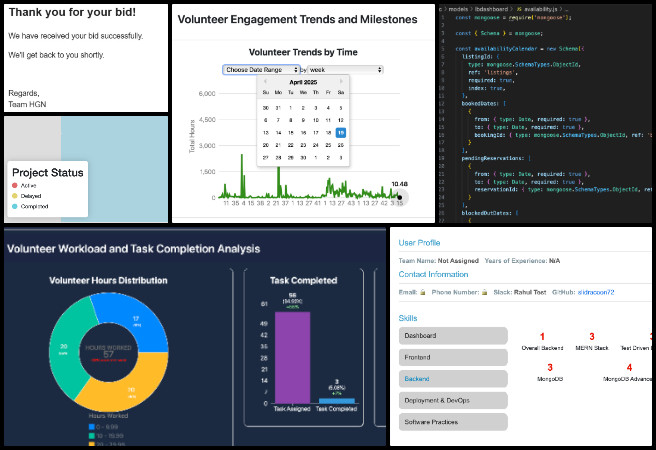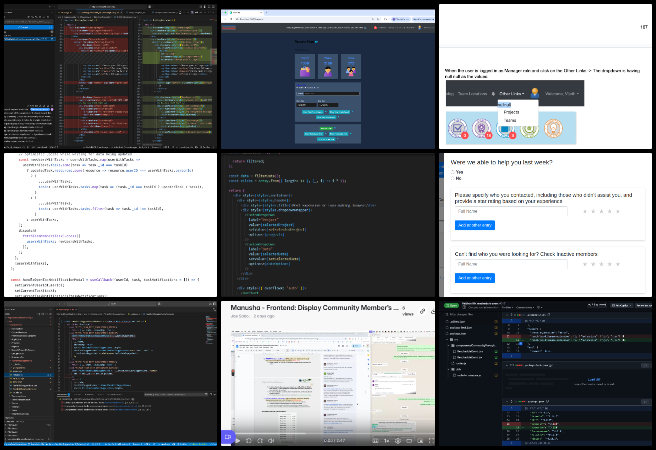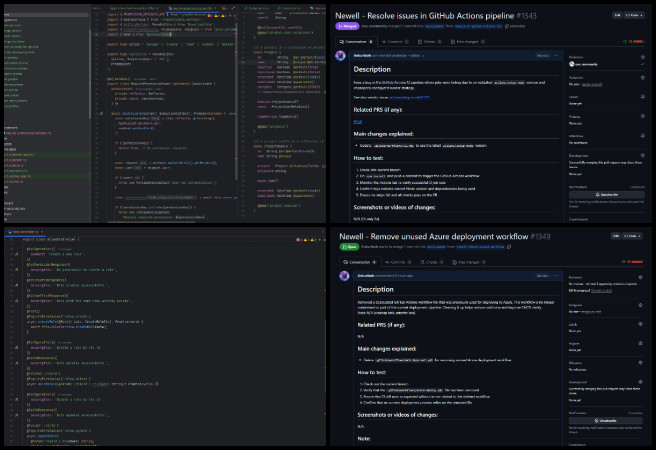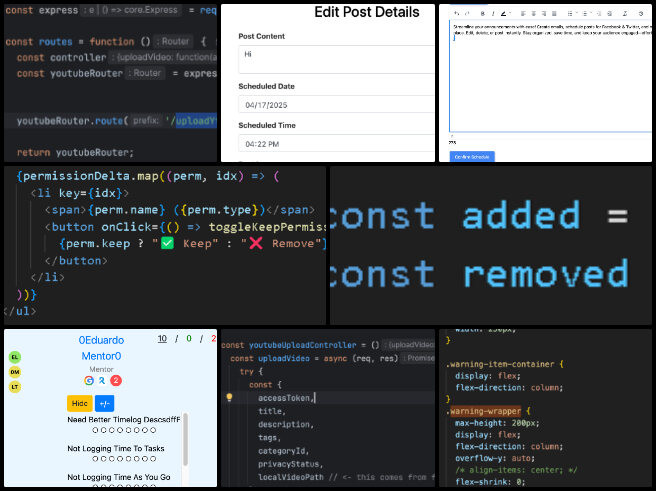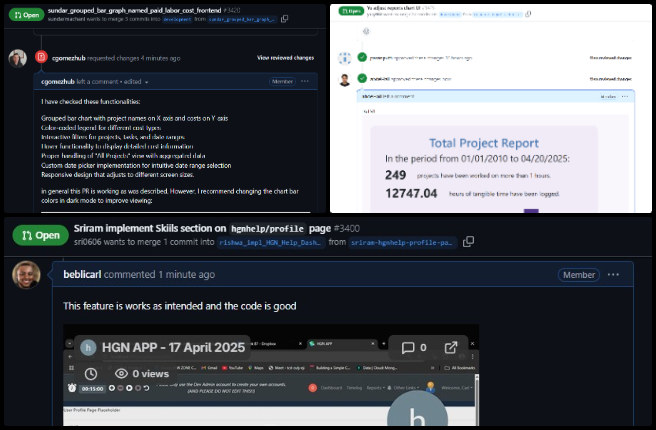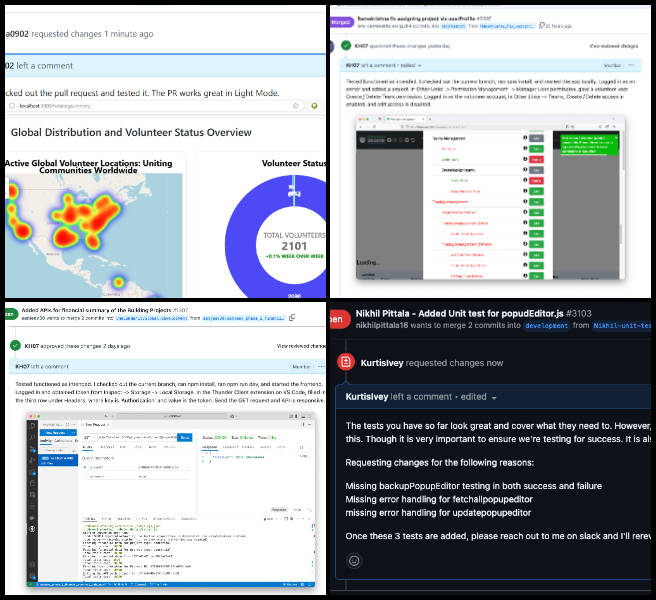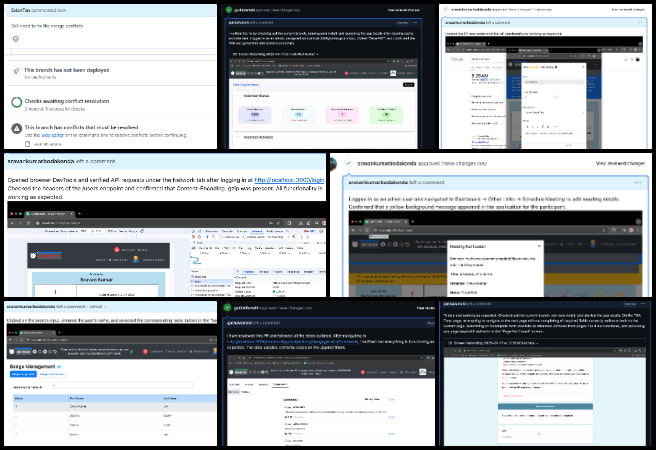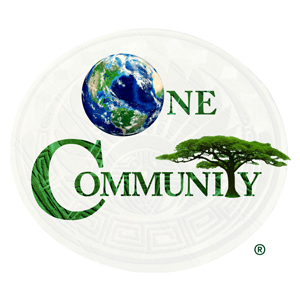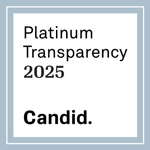Upgrading Our Future – One Community Weekly Progress Update #631
At One Community, we are proud to be upgrading our future through our holistic approach to community building. Our all-volunteer team is dedicated to creating a model that becomes self-replicating and will be used to create a global collaboration of teacher/demonstration hubs. We are doing this for “The Highest Good of All” by creating sustainable approaches to food, energy, housing, education, for-profit and non-profit economic design, social architecture, fulfilled living, global stewardship practices, and more. Our goal is to open source and free-share the complete process of evolving sustainability and regenerating our planet.
- Here’s our project overview
- Here’s our world-change methodology
- Here’s how this becomes self-replicating
- Here’s how we are open source and free-sharing all the do-it-yourself designs
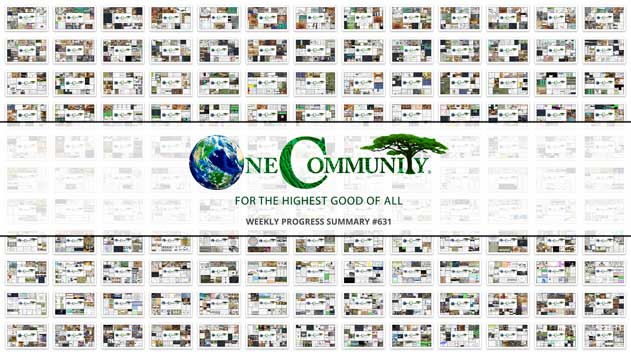
OUR MAIN OPEN SOURCE HUBS
Click on each icon to be taken to the corresponding Highest Good hub page.
One Community’s physical location will forward this movement as the first of many self-replicating teacher/demonstration communities, villages, and cities to be built around the world. This is the April 21st, 2025 edition (#631) of our weekly progress update detailing our team’s development and accomplishments:
Upgrading Our Future
One Community Progress Update #631
DONATE | COLLABORATE | HELP WITH LARGE-SCALE FUNDING
CLICK HERE IF YOU’D LIKE TO RECEIVE AN EMAIL EACH WEEK WHEN WE RELEASE A NEW UPDATE
YOU CAN ALSO JOIN US THROUGH SOCIAL MEDIA
ONE COMMUNITY WEEKLY UPDATE DETAILS
HIGHEST GOOD HOUSING PROGRESS
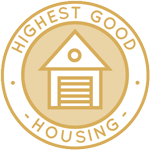 One Community is upgrading our future through Highest Good housing that is artistic and beautiful, more affordable, more space efficient, lasts longer, DIY buildable, and constructed with healthy and sustainable materials:
One Community is upgrading our future through Highest Good housing that is artistic and beautiful, more affordable, more space efficient, lasts longer, DIY buildable, and constructed with healthy and sustainable materials:
- Learn about: Our Upcoming Crowdfunding Campaign
- Learn about the different village models: 7 Sustainable Village Models
- Visit the open source portals for the first two: Earthbag Village OS Hub | Straw Bale Village OS Hub
This week, Adil Zulfiquar (Engineer) continued working on the Vermiculture Toilet engineering designs. Adil worked on the temperature monitoring and control report by adding a new section on heating devices for temperature regulation. He explored options including heat lamps, heat emitters, thermal heating pads, greenhouse heaters, and soil heating cables. Each option was analyzed for compatibility with the vermiculture system, and their advantages and disadvantages were evaluated to identify the most suitable choice for the setup. The Earthbag Village, the first of seven planned villages, serves as the initial housing component within One Community’s open source model for upgrading our future. See below for some of the pictures related to this work.
Anil Karathra (Mechanical Engineer) continued advancing the engineering and design of the Vermiculture Toilet for the Earthbag Village project. Work summaries and reports were sent to Jae for feedback, and integration of the new toilet design into the CAD assembly continued. The weekly team meeting included a review of submissions from other contributors. Feedback from Jae was used to begin updating related documents. Formatting issues in the slider force calculation report were corrected, and PDFs were created for the DIY toilet seat resources folder. New engineering documentation for the vermiculture project was started by transferring content from the collaboration document to a new format. A weekly summary was prepared, and screenshots of recent work were uploaded to Dropbox. This commitment to upgrading our future drives the development of innovative, eco-friendly solutions that balance environmental responsibility with high standards of functionality. See below for pictures related to this work.
Faeq Abu Alia (Architectural Engineer) continued his work on the Earthbag Village 4-dome home renders. Faeq worked on the walkthrough video render to present the updated outdoor space, which includes added natural features and landscaping elements. Interior adjustments were also made in the kitchen by editing material finishes and adding new components such as a refrigerator and dishwasher to complete the layout. The Earthbag Village is the first of 7 to be built as the housing component of One Community’s open source plans for upgrading our future. View examples of this work in the pictures provided below.
Karthik Pillai (Mechanical Engineer) continued helping finish the Vermiculture Toilet engineering and helping with the Earthbag Village 4-dome home roof plan. Karthik worked on the 4-dome cluster roof project, focusing on simulating the structural interaction between the roof and surrounding earthbags and assessing overall structural behavior. At Michaela’s request, a simulation was also performed on a window panel or beams, with further work on this simulation planned. Issues related to the use of multiple materials in the simulation affected the results. For the vermiculture project, report work continued with data compilation, organization of findings, and initial drafting of the document. As the first of seven planned villages, Earthbag Village provides the initial housing within One Community’s open source designs for upgrading our future. See the work in the collage below.
Ketsia Kayembe (Civil Engineer) continued working on the Earthbag Village designs related to Rainwater Harvesting and Water Catchment. Ketsia focused on the inlet design for the Earthbag Village stormwater management system, revising the inlet design section based on feedback from Yi-Ju and incorporating recent updates to the design. She met with Yi-Ju on Wednesday to discuss progress on assigned tasks and clarify next steps. A first draft of the cost analysis calculations for the rainwater harvesting system was completed, with the understanding that updates will be needed as the design is refined. The next step involves updating the AutoCAD files once the final design is provided by Yi-Ju. One Community’s open source model for upgrading our future begins with Earthbag Village, the first of seven planned villages providing housing. See below for some of the pictures related to this work.
Michaela Silva (Architect) continued working on the architectural details for the Earthbag Village 4-dome home design. Michaela modeled the kitchen wall framing to guide the plumbing stack locations and created a sheet for the living room built-in plan and details. She drew the elevation and developed a detailed framing plan for the living room built-in. She also produced a section through the framing and another section through a drawer. As the first of seven villages in One Community’s open source plan for upgrading our future, the Earthbag Village represents the housing element. See her work in the collage below.
Rumi Shah (Civil Engineer) continued working on the Earthbag Village upgrades to bring our designs closer to construction-ready plans. Rumi worked on preparing and refining the structural detailing for the roof floor plan, ensuring alignment with design standards. Detailed section drawings were developed to accurately represent construction elements. Work also continued on the elevation sections, which are in progress and expected to be finalized soon as part of the overall drawing set for the project. One Community’s open source resources for upgrading our future begin with the Earthbag Village, the first of seven planned villages providing housing. See below for some of the pictures related to this work.
Yi-Ju Lien (Environmental Engineer) continued her work on the Earthbag Village LEED points related to stormwater retention. Yi-Ju revised the Earthbag Village AutoCAD file by reviewing the original plan and addressing several design issues. She resolved the asymmetry between the left and right sides of the village layout and corrected misalignment between the cluster boundaries and road boundaries. The cluster boundary was adjusted to fully enclose all dome structures, as parts of some domes had been excluded in the original layout. Related dimension annotations were updated to improve clarity and ensure consistency with the revised layout, highlighting the importance of maintaining collaboration and unity in upgrading our future. See some of the work done in the collage below.
DUPLICABLE CITY CENTER PROGRESS
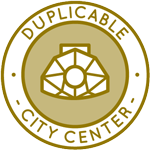 One Community is upgrading our future through a Duplicable and Sustainable City Center that is LEED Platinum certified/Sustainable, can feed 200 people at a time, provide laundry for over 300 people, is beautiful, spacious, and saves resources, money, and space:
One Community is upgrading our future through a Duplicable and Sustainable City Center that is LEED Platinum certified/Sustainable, can feed 200 people at a time, provide laundry for over 300 people, is beautiful, spacious, and saves resources, money, and space:
- Learn about this building and it’s function: Duplicable City Center Open Source Hub
This week, Andrew Chen (Industrial Designer) continued working on the Dormer second-floor window for the Duplicable City Center . He ran FEA stress simulation tests to check that the model is structurally stable and made adjustments to parts of the window frame with assembly in mind, ensuring the components fit together and can be assembled smoothly by workers. He also researched wood materials and adjusted the dimensions of the model parts based on the available sizing of the selected material. The Duplicable City Center is a foundational part of One Community’s open-source model, representing our commitment to upgrading our future. See some of this work in the pictures below.
Manjiri Patil (Mechanical Design Engineer) continued working on the designs for the Duplicable City Center DIY-replicable hub connector. She has incorporated Jae’s feedback into the manufacturing process document and submitted the updated version for review. Manjiri also addressed Jae’s comments on the dome assembly Excel sheet. Additionally, she has updated the CAD model, completed the assembly, and ensured all components are accurately reflected in the Excel sheet, which has now been submitted to Jae for further review. As part of One Community’s open-source model, the Duplicable City Center showcases our approach to upgrading our future. Take a look at the related work below.
Shu-Tsun (Engineer) continued working on the Duplicable City Center by conducting the structural and frame analysis of the City Center dome using Autodesk Inventor, as well as working on the spreadsheet for which she is responsible. Shu-Tsun completed her initial snow load analysis; however, upon reviewing the results, she noticed some irregularities that raised concerns about the accuracy of the data or the setup of the model. To address these issues, she scheduled and participated in a meeting with her team to discuss the findings, troubleshoot potential sources of error, and determine the next steps for refining the analysis. In addition to revisiting her snow load work, Shu-Tsun began preparing for the next phase of her project-wind load analysis. She initiated the setup process by organizing and configuring the necessary files, ensuring that all parameters and boundary conditions were correctly defined to support a smooth transition into this new analytical task. The Duplicable City Center, a core element of One Community’s open-source strategy, plays a vital role in upgrading our future. See some of this work in the pictures below.
Srujan Pandya (Mechanical Engineer) continued helping with the Duplicable City Center FEA analysis. He completed the documentation with modifications to the original content and added new information related to FEA analyses, specifically focusing on frame analysis using Autodesk Inventor. A separate section was created to explain the use of constraints and rigid links, including their roles and quantities in modeling the dome and the overall setup. The section also includes material properties and a summary table. The formatting has been adjusted to maintain consistency across the document, and the section on frame analysis is now updated with the required technical details. One Community’s Duplicable City Center is designed as an open-source solution focused on upgrading our future. Take a look at the related work below.
Yan “Jenni” Zu (Architectural Designer) continued her work on the greenhouse area of the Duplicable City Center. She continued working on the rendering of the animal area. She adjusted different types of plants to enhance the natural environment and placed more animals to make the scene more dynamic and visually engaging. By carefully refining these elements, Jenni improved the overall composition and depth of the renderings. Her adjustments contributed to a more realistic and immersive representation of the space, ensuring that the final visuals effectively capture the intended atmosphere and detail. One Community’s open-source Duplicable City Center stands as a blueprint for upgrading our future through sustainable design. The images below showcase some of this work.
HIGHEST GOOD FOOD PROGRESS
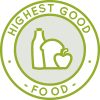 One Community is upgrading our future through Highest Good food that is more diverse, more nutritious, locally grown and sustainable, and part of our open source botanical garden model to support and share bio-diversity:
One Community is upgrading our future through Highest Good food that is more diverse, more nutritious, locally grown and sustainable, and part of our open source botanical garden model to support and share bio-diversity:
- Learn about the structures: Hoop House Hub | Aquapini & Walipini Open Source Hub
- See what we’ll be growing: Gardens & Hoop Houses | Large-scale Structures | Food Forest | TA
This week, the core team completed adding photos to the Master Tools, Equipment, and Materials/Supplies document, including items related to the Goat, Chicken, and Rabbit sections. They also clarified the Hoop House TEMS list by defining specific additions, marked with an asterisk, that pertained to ground clearing, site preparation, ongoing operations, and maintenance, thus differentiating them from construction-specific items. Following the completion of the Hoop House list, they finalized the tools list for the Earthbag Dome project. To improve the search function within the Master TEMS list, they transitioned from single-letter to multi-letter project designations. The Highest Good Food initiative is a key component of One Community’s open source plans, focused on upgrading our future, and exemplifies the organization’s commitment through innovative design and implementation. Below are some of the images showcasing this work.
Chelsea Mariah Stellmach (Project Manager) continued her work on the Transition Food Self-sufficiency Plan menus and customization spreadsheets. She submitted her reports to Jae for review. Jae provided feedback focused mainly on formatting and organization. Chelsea began making changes to the Updated Food Self-Sufficiency Plan Page Report based on that input. The Highest Good Food initiative is a key component of One Community’s open source plans, focused on upgrading our future, and exemplifies the organization’s commitment through innovative design and implementation. Below are some of the images showcasing this work.
Dirgh Patel (Volunteer Mechanical Engineer) continued assisting with the Climate Battery design evolutions. He worked on the thermal simulation of the complete greenhouse model, applying temperature and convection boundary conditions. Mesh settings were refined using mesh control to improve accuracy, but the simulation required additional time due to the complexity of the pipe network, which was modeled using the sweep feature. To facilitate successful simulation, the pipe wall thickness was adjusted from 0.024 inches to 0.08 inches. A full thermal analysis of the model, including the greenhouse and piping system, was completed. Results for the warmest day of summer were obtained, with outside, inside, and underground temperatures set at 36°C, 25°C, and 20°C, respectively. The analysis showed that convection led to a reduction in the outside temperature to 31°C. The Highest Good Food initiative is a key component of One Community’s open source plans, focused on upgrading our future, and exemplifies the organization’s commitment through innovative design and implementation. Below are some of the images showcasing his work.
Jay Nair (BIM Designer) continued working on Aquapini and Walipini Planting and Harvesting lighting and HVAC design. He continued researching how to create a lighting fixture model in Revit and identified an error in the power consumption value used in the previous lighting energy calculations. As a result, he updated the calculations to reflect the corrected power data for the fixture model selected for Walipini 1. The Highest Good Food initiative is a key component of One Community’s open source plans, focused on upgrading our future, and exemplifies the organization’s commitment through innovative design and implementation. Below are some of the images showcasing this work.
Keerthi Reddy Gavinolla (Software Developer) continued working on the Highest Good Food page additions, covering small-business and urban community options. She updated the Expresses Team’s Blog #630. Continued working on the Highest Good Food Infrastructure website by editing and adding images, adjusting formatting and headings, and refining bullet points. She added anchor links to headings for direct navigation, included link titles for hover effects, and made additional formatting changes to improve overall visual presentation. The Highest Good Food initiative is essential to One Community’s open source plans, focused on upgrading our future, and exemplifies the organization’s commitment through innovative design and implementation. Her contributions are highlighted in the collage below.
Pallavi Deshmukh (Software Engineer) continued reviewing team members’ work and incorporated their contributions to ensure completeness. She also assisted with the research for upgrading our future by completing three interviews and providing details accordingly. She completed three interviews and submitted the required details. She finished work on the Permaculture web page following Jae’s review and made adjustments based on his suggestions before resubmitting it for further feedback. Pallavi tested PRs #1324 and #3398 to verify the functionality related to group updating of team codes and reviewed PR #2062, which addresses spacing between the back button and the return title. The Highest Good Food initiative is a key component of One Community’s open source plans, focused on upgrading our future, and exemplifies the organization’s commitment through innovative design and implementation. Her contributions are highlighted in the collage below.
Tanmay Koparde (Industrial Engineer and Team Administrator) continued optimizing the Food Procurement and Storage Plan to enhance efficiency and sustainability. He applied Just-In-Time (JIT) methodology to improve food storage efficiency and reduce supply chain disruptions. He utilized FIFO (First-In, First-Out) and safety stock concepts to address inventory shortages, maintain emergency reserves, ensure circulation of fresh food products between storage and use, and support consistent distribution and inventory control. The Highest Good Food Initiative is a key component of One Community’s open source plans, focused on upgrading our future, and exemplifies the organization’s commitment through innovative design and implementation. See his work in the collage below.
HIGHEST GOOD ENERGY PROGRESS
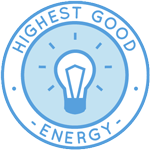 One Community is upgrading our future through Highest Good energy that is more sustainable, resilient, supports self-sufficiency and includes solar, wind, hydro and more:
One Community is upgrading our future through Highest Good energy that is more sustainable, resilient, supports self-sufficiency and includes solar, wind, hydro and more:
- Learn about the open source sustainable-energy foundations: Solar, Hydro, and Wind
- Explore our research into the most sustainable products and companies for saving water and energy: Insulation, Eco-laundry, Lightbulbs and Light Bulb Companies, Doors and Door Companies, Windows and Window Companies, Toilets, Faucets and Faucet Accessories, Urinals, and more.
This week, Dishita Jain (Data Analyst) continued assisting with the Highest Good Energy research and cost analysis for upgrading our future. Time was spent refining the solar infrastructure cost analysis, making the calculations dynamic, and sharing the updated file for review. Additional hours were allocated to expanding the cost analysis by researching newly added list items. Resources related to supplementary icons were also gathered and organized in the project folder. Earlier in the week, time was spent on the OC Administration project, completing a training team review that included creating a visual collage, summarizing team contributions, and providing feedback to other administrators. The Highest Good Energy initiative is a key component of One Community’s open source plans, focused on upgrading our future, and exemplifies the organization’s commitment through innovative design and implementation. Below are some of the images showcasing this work.
Muhammad Sarmad Tariq (Electrical Engineer) continued assisting with off-grid and grid-tied Solar Microgrid comparisons as part of the Highest Good Energy component. This is part of research for upgrading our future, covering sustainable power supply. This week’s focus was on the report writing for the calculator for calculating profit and net savings for an off-grid and a grid-tied solar PV system. He also read the literature regarding how PV systems are sized in accordance with the guidelines provided by the Institute of Electrical and Electronics Engineers, which is a professional organization focusing on electrical engineering specifically. The Highest Good Energy initiative is a key component of One Community’s open-source plans, focused on upgrading our future, and exemplifies the organization’s commitment through innovative design and implementation. See his work in the collage below.
HIGHEST GOOD EDUCATION PROGRESS
 One Community is upgrading our future through Highest Good education that is for all ages, applicable in any environment, adaptable to individual needs, far exceeds traditional education standards, and more fun for both the teachers and the students. This component of One Community is about 95% complete with only the Open Source School Licensing and Ultimate Classroom construction and assembly details remaining to be finished. We’ll report on the final two elements to be finished as we develop them. With over 8 years of work invested in the process, the sections below are all complete until we move onto the property and continue the development and open sourcing process with teachers and students – a development process that is built directly into the structure of the education program and everything else we’re creating too:
One Community is upgrading our future through Highest Good education that is for all ages, applicable in any environment, adaptable to individual needs, far exceeds traditional education standards, and more fun for both the teachers and the students. This component of One Community is about 95% complete with only the Open Source School Licensing and Ultimate Classroom construction and assembly details remaining to be finished. We’ll report on the final two elements to be finished as we develop them. With over 8 years of work invested in the process, the sections below are all complete until we move onto the property and continue the development and open sourcing process with teachers and students – a development process that is built directly into the structure of the education program and everything else we’re creating too:
- Program Overview: Education Open Source Hub
- How the components work together in designing human orchestrated eco-abundance: How to use the Education for Life Program
- Lesson Plans for Life – Lesson Plans How-to
- Foundations of Outstanding Leaders, Teachers, and Communicators
- Curriculum for Life
- Teaching Strategies for Life
- Learning Tools and Toys for Life
- Evaluation and Evolution
This week, Akhil Guntur (FullStack Engineer) continued his work on enhancing and refining his backend model documentation, carefully exploring multiple backend design approaches. He connected with a new teammate, Sidhartha, and provided a comprehensive overview of the project’s status and goals. He shared key ideas, gathered suggestions, and engaged in meaningful discussion to align on next steps. Akil also actively participated in team meetings, carefully reviewed the backend model document created by teammates, and evaluated whether any updates or suggestions were necessary. His focus was on ensuring shared understanding and consistency across the backend design. The One Community model of upgrading our future with sustainably built classrooms like this is an excellent example of sustainable change for the whole planet. See the collage below for his work.
This week, Chitra Siddharthan (Data Analyst and Team Administrator) continued focusing on the blog, Dropbox files, and weekly summaries for team Code Crafters for week 630. She added tasks and answered queries related to the tasks and user manual for Phase 2. She worked on defining the middle section of the teacher dashboard and designed the corresponding icons for those elements. Her work also included checking the status of pull requests, tasks, and the user manual in Phase 2. Chitra attended a Slack huddle with Akhil, Harshitha, and Anuneet to discuss progress and next steps, and had an individual meeting with Harshitha to go over the Figma progress and next steps. She also reviewed the document arranged by Harshitha outlining the action items and worked on reviewing the remaining Figma action items in Phase 4. The user manual for Phase 2, along with the weekly summary and Dropbox files, was updated to support the week’s work. The One Community model of upgrading our future with sustainably built classrooms like this is an excellent example of sustainable change for the whole planet. See the collage below for her work.
Mrinalini Raghavendran (Software Engineer) continued refining and documenting both frontend and backend requirements for various graphs. She worked on refactoring the codebase by removing the Stripe payment integration and updating the implementation to support PayPal. She submitted a pull request (HGNRest PR#1341) for the listing payment backend and reviewed a feedback video from Jae related to this task. Using the feedback, she maintained an offline document to track revisions and noted additional suggestions. She communicated with Jae to clarify task requirements and began organizing both frontend and backend specifications within the document. Mrinalini completed adding the remaining requirements, formatted the document for consistency, and reviewed its contents to identify and remove any unnecessary elements. Final refinements were made to improve the document’s structure and shared with Jae for his review and feedback By forwarding upgrading our future with classrooms like this, One Community provides a replicable example for global sustainable development. See the collage below for her work.
HIGHEST GOOD SOCIETY PROGRESS
 One Community is upgrading our future through a Highest Good society approach to living that is founded on fulfilled living, the study of meeting human needs, Community, and making a difference in the world:
One Community is upgrading our future through a Highest Good society approach to living that is founded on fulfilled living, the study of meeting human needs, Community, and making a difference in the world:
- Read the Highest Good society overview: Highest Good Society
- Learn about the model for fulfilled living and sharing: A Day in the Life
- Learn about the 4 economic models: RBE | For-profit | Non-profit | Entrepreneurship
- Learn about our open source community collaboration and management software: The Highest Good Network
This week, the core team completed over 45 hours managing One Community’s volunteer-work review not included above, emails, social media accounts, web development, new bug identification and bug-fix integration for the Highest Good Network software, and interviewing and getting set up new volunteer team members. They also shot and incorporated the video above that talks about upgrading our future and how upgrading our future are a foundation of the bigger picture of everything One Community is doing. The image below shows some of this work.
Anoushka Hazari (Data Analyst) continued working on Highest Good Network analyzed a sample pull request dataset and created a code review dashboard to demonstrate how key review metrics such as PR volume, review quality, and reviewer performance can be visualized and tracked. The dashboard included visualizations like pie charts, bar graphs, and radar charts to represent data such as open vs closed PRs, review status breakdown, and reviewer activity. Specific insights from the dataset showed PRs with no assigned reviews, one with an excessive number of reviews, and a high overall approval rate. She continued working on visual representations of PR quality, exploring how best to define and present it using measurable factors like comments, approvals, and rework. Based on feedback from Jae’s video, Anoushka also began evaluating different graph types to better highlight trends and comparisons. Separately, she reviewed her team’s pull requests, updated the PR review table, added new team members, edited and illustrated a blog post, corrected a previous blog error, and made updates to the HGN spreadsheet including reviewing content on sheet 4. This work helps One Community’s mission of an upgrading our future. See some of this work in the pictures below.
Govind Sajithkumar (Project Manager) continued focusing on Meta platform analytics and content management for Facebook and Instagram channels. He updated the social media analytics spreadsheet with the latest performance metrics, collecting and processing new audience data for both Facebook and Instagram platforms to ensure current reporting. He also updated the master spreadsheet with refreshed audience demographics for both platforms. Govind refreshed the Facebook and Instagram feeds with new posts and set up regular posting schedules to maintain brand visibility on both social channels. He recorded all new content details in the Open Source spreadsheet, capturing essential metadata for each post, and aligned publication times with audience engagement windows to maximize reach. Additionally, Govind managed social media content rotation by preparing and scheduling regular batches of posts across both channels while updating the spreadsheet with all new content information, including post descriptions, media types, and publishing timestamps. He also completed PR Review Team Management tasks by providing comments and feedback on team member documents, modifying his WordPress site with the latest team summary and collage, filling the PR Review Team Table with required information, and updating the HGN PR spreadsheet with new team members and reviewed PRs. This work helps One Community’s mission of an upgrading our future. The images below showcase some of this work.
Hritvik Mahajan (Data Analyst) continued focusing on marketing and administrative tasks. He posted the highest engagement content for the Marketing and Promotion team on Twitter communities, and continued refining the HGN Social Media Scheduler design. He reviewed multiple pull requests for the HGN Software Development team and followed up with team members on Slack to address requested changes and resolve merge conflicts. Hritvik also provided detailed feedback on the Step 4 document for Blog #630, supporting the OC Administration team by reviewing and commenting on admin team submissions. This work helps One Community’s mission of an upgrading our future. The following images show his work for the week.
Jaiwanth Reddy Adavalli (Project Manager) continued developing the Job Applicants page and the Highest Good Network Phase 2 Dashboard. He continued developing the HGN Phase 2 Dashboard by designing new graphs and wireframes while also updating existing visual elements to align with recent data structure changes. Jaiwanth documented action items for components like the contributor analytics and task progress modules to support upcoming development. As part of the PR Review Team, he evaluated multiple pull requests submitted by his assigned volunteer group, offering feedback to resolve issues and facilitate merging. This work helps One Community’s mission of an upgrading our future. The following images show his work for the week.
Raghav Dinesh Pamuru (Product Manager) continued work on coordinating with cross-functional teams to update the project roadmap and ensuring that all development tasks aligned with weekly goals. He tracked progress on a product feature rollout aimed at improving user onboarding metrics. Raghav aligned deliverables across engineering, design, and support teams, updated the project plan through email communications, and ensured blockers were escalated during daily standups. He used SQL to pull user behavior data from the onboarding funnel and shared findings in a team sync to help prioritize UX changes. Raghav also collaborated with the analytics team to validate dashboard metrics in Tableau and documented product feedback from stakeholders in Google Sheets. This work helps One Community’s mission of an upgrading our future. The images below showcase some of this work.
Yash Shah (Data Analyst and Team Administrator) continued his admin work and managed the social architecture component of the Highest Good Network software. He followed up on GitHub by tagging reviewers and owners of pull requests with unresolved conflicts to support timely resolution. He coordinated with Sharada, Pallavi, and Vaibhavi to gather updates and clarify pending actions on their respective PRs. Yash also worked with the software team on improving dark mode across various components, ensuring consistency with the overall theme and addressing specific styling issues. He collaborated with the software team to confirm proper implementation on affected pages. As part of Phase 3 development support, he monitored the status of related pull requests, identified those needing updates or further review, and noted blockers requiring attention. Additionally, Yash created a blog post for Dev Dynasty, organized the folder for the week, compiled a collage, and provided feedback on fellow volunteers’ blogs. This work supports One Community’s mission of an upgrading our future. The following images show his work for the week.
ADMINISTRATION TEAM
The Administration Team summary, covering their work administrating and managing most of One Community’s ongoing process for upgrading our future was managed by Bhakti Tigdi (Project Manager) and includes Anuneet Kaur (Administrator), Himanshu Mandloi (Engineering Project Manager), Jibin Joby (Data Analyst), Khushie Zaveri (Communication Strategist), Kishan Sivakumar (Administrative Assistant and Software Team Manager), Olawunmi “Ola” Ijisesan (Administrative and Management Support), Olimpia Borgohain (Data Analyst and Team Administrator), Preksha Welankiwar (Digital Marketing Manager), Rachna Malav (Data Analyst), Rishi Sundara (Quality Control Engineer and Team Administrator), Ryutaro Wongso (Economic Analyst and Team Administrator), Saumit Chinchkhandi (Administrative Assistant and Software Engineer), Vikas Pande (Software Administrator), and Vishnu Murali (Data Analyst). The Highest Good Network software is how we’ll be managing and objectively measuring our process for upgrading our future through our social architecture, construction, production, and maintenance processes.
This week, the Administration team focused on project coordination, software development support, campaign outreach, and content management activities. Anuneet completed the “Highest Good Education Program Licensing and Accreditation” tutorial and edited the associated webpage with AI-generated content and graphics. She organized assets for the “Most Sustainable” research task, reviewed documentation for HGN development, and initiated planning for Figma designs. Himanshu managed OC Administration responsibilities, including daily timelog review, hour adjustments, and follow-ups with team members. He communicated updates to Jae, saved weekly images, and published a blog about open source strategies. Jibin increased BlueSky engagement with daily posts, collaborated with Vishnu on scraping improvements, and updated visual dashboards. He also reviewed housing team submissions, created collages, and made content updates. Khushie supported the software and Team Moonfall blogs, finalized petition messaging for the metric system campaign, and created a media kit on Notion for outreach efforts. Kishan focused on senior admin tasks by reviewing volunteer documentation, optimizing SEO pages based on feedback, and beginning new assignments. This work contributes to One Community’s commitment to upgrading our future.
Olimpia reviewed a new team member’s work, finalized a team blog, scheduled LinkedIn posts through April 30, and updated the LinkedIn analytics dashboard. Preksha created content for Threads and LinkedIn, reviewed PDFs as a corrections admin, and worked on early-stage outreach strategies for the metric system campaign. Rachna was unable to conduct interviews due to low email volume and instead worked on SEO content updates and internal communications. Rishi tested and followed up on multiple pull requests, merged blog entries into Blog #630, and performed SEO optimization. Ryutaro refined the Duplicable City Center cost template to better align with contractor standards, reviewed the Binary Brigade team’s output, rated the team’s project manager, and prepared a blog and collage. Saumit reviewed PRs from volunteers A–E, updated his blog and WordPress page, and performed frontend testing on various pull requests. Vikas conducted interviews for software team candidates, validated and optimized blog scraping scripts, and tracked technical bios with Sara. Vishnu reviewed Lucky Star contributions, enhanced BlueSky visual dashboards with improved error handling, and continued daily posting to boost user engagement. This work contributes to One Community’s commitment to upgrading our future. See below to view images of their work.
GRAPHIC DESIGN TEAM
The Graphic Design Team’s summary was managed by Harshitha Rayapati (Program Manager) and includes Aurora Juang (Graphic Designer), Junyuan Liu (Graphic Designer, UI/UX Designer) and Yafei (Jojo) Wu (Graphic Designer, UI/UX Designer) covering their work on graphic designs for upgrading our future. This week, Aurora finalized the chapter icons for the Seven Villages book and website, corrected broken links in the digital book, and fixed errors in previously published social media bio announcements. She created additional social media content and continued developing campaign graphics. She also crafted and published new volunteer bios using Google Sheets, ensuring consistency and accuracy across entries.
Junyuan created social media content by collecting images and testing design options, completing three new visuals and beginning work on the next concept by sourcing images and brainstorming design ideas. In addition to social media tasks, he wrote volunteer bios, designed images, and updated information on a web page. Yafei (Jojo) completed revisions on four social media visuals, adjusting font weights for readability, standardizing element proportions, and aligning visuals with supporting text. She ensured adherence to brand guidelines, recorded feedback and revisions, and exported the final assets in required formats with verified specifications for each platform. See the Highest Good Society pages for more on how this contributes to upgrading our future. See the collage below to view some of their work.
HIGHEST GOOD NETWORK PROGRESS
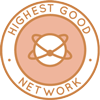 One Community is upgrading our future through open source Highest Good Network® software that is a web-based application for collaboration, time tracking, and objective data collection. The purpose of the Highest Good Network is to provide software for internal operations and external cooperation. It is being designed for global use in support of the different countries and communities replicating the One Community sustainable village models and related components.
One Community is upgrading our future through open source Highest Good Network® software that is a web-based application for collaboration, time tracking, and objective data collection. The purpose of the Highest Good Network is to provide software for internal operations and external cooperation. It is being designed for global use in support of the different countries and communities replicating the One Community sustainable village models and related components.
- Learn about our open source community collaboration and management software: The Highest Good Network
This week, the core team continued their work on the Highest Good Network PRs and confirmed fixes for several issues including Project Title, Sorting Task button, and spacing between the back button and return title (PR2062, 3415); the Timelog filter not showing total time for the filtered task (PR3320); the permission for “Interact with Task ‘Ready for Review’” not working as expected; the “Export All Badges to PDF” feature exporting only old assigned badges (PR3306); the ability to edit and limit link type (PR3251); and the addition of the “R” icon and functionality for accessing a person’s report from their Profile Page (PR3215). Two items were found not fixed: error popups when creating a new user and being unable to add a new account from the User Management page (frontend PR3279 and backend PR1272); the second was the issue of restoring blue color for intangible time (PR3292), where the color appears blue but the font remains bold. They also assigned tasks to four volunteers and reported a bug that prevents the creation of a new WBS, including a recorded video illustrating the issue. These improvements represent incremental steps towards the realization of upgrading our future. See the Highest Good Society and Highest Good Network pages for more on how this relates to upgrading our future. The collage below shows some of their work.
ALPHA SOFTWARE DEVELOPMENT TEAM
This week, the Alpha Team’s summary, covering their work on the Highest Good Network software, was managed by Vikas Pande (Software Administrator) and the team includes Eve Ye (Volunteer Software Engineer Intern), Jiaqi Nie (Software Engineer), Nikita Kolla (Full Stack Developer), Sujith Reddy Sudini (Full-Stack Software Developer), and Vinay Vallabineni (Software Engineer). This software is a foundation of the One Community tracking and management process for upgrading our future.
Jiaqi completed development of the GET property API, ensuring it returns key fields such as images, description, amenities, and price. He tested the API using Postman, identified opportunities to improve the structure of the return value for better frontend integration, and reviewed logic for handling invalid property IDs and response status codes. He plans to continue testing the user bid API and refining the GET property API’s return structure for enhanced clarity and usability.
Nikita reviewed and retested her stale pull requests, implementing necessary changes based on previous feedback. She resolved merge conflicts by integrating the latest development branch, ensuring her code is up to date and compatible with recent team changes.
Vinay fixed a bug related to the pop-up notification that appears when a user’s permission changes, tested the fix, and merged it manually. He began work on dynamic skill ranking by adding a sameTeam flag to the user object response and attempted to retrieve top skills, but encountered issues due to the lack of support for dynamic column names. The team’s efforts support the ongoing goal of upgrading our future. See below for some of the team’s work.
BINARY BRIGADE SOFTWARE DEVELOPMENT TEAM
The Binary Brigade Team’s summary overseeing advancements in the Highest Good Network software was managed by Aureliano Maximus (Volunteer Software Engineer) and includes Amalesh Arivanan (Software Engineer), Anirudh Sampath Kumar (Software Developer), Deepthi Kannan (Software Engineer), Geeta Matkar (Software Engineer), Jaissica Hora (Software Engineer), Nikhil Routh (Software Engineer), Sabitha Nazareth (Software Engineer), Samman Baidya (Software Engineer), Sriram Seelamneni (Software Engineer), Sunil Kotte (Full Stack Developer), Vasavi Vuppala (Software Engineer), and Wangyuan Chen (Software Engineer). The Highest Good Network software is how we’ll be managing and objectively measuring our progress in upgrading our future through our social architecture, construction, production, and maintenance processes.
This week, Amalesh Arivanan resolved ESLint errors across multiple directories and files, including test folders and components such as src/tests/, src/components/test/**/*, and src/components/Login/LoginPage.test.js, as part of upgrading our future through cleaner, more maintainable code. Anirudh worked on PR 2989 to update the “Projects” dropdown on the BMDashboard page, addressed CSS feedback, resolved merge conflicts, and submitted the updated code, contributing directly to upgrading our future. Aureliano made progress on the Instagram API integration by moving the login logic to the index.js file and testing the extraction of the authorization code from the URL query, which had been a key step in upgrading our future integrations, though a solution had not yet been identified.
Deepthi continued work on the leaderboard UI improvements by completing follow-up changes requested by Jae, shaping upgrading our future through modifications to the edit modal button behavior and adjustments to the content resizing logic for the first block. Geeta worked with Raghav and Olimpia on task 837, created UI/UX spreadsheets and mockups for the Social Media Data Analysis and Work Tracking Dashboard as a step toward upgrading our future, and added more user accounts data to the existing dashboard. Jaissica added manual blue square assignment functionality by updating backend and frontend components to track assignment source and editor, which improved transparency in upgrading our future systems. Nikhil continued the migration from .css to .module.css by modifying 174 JSX files. This included updating import statements, changing className references to the new module format, and fixing issues related to dynamic class handling—supporting upgrading our future through better modular design. Sabitha enhanced the listing dropdown to include properties and amenities, updated village map image links through controllers, stored the links in the database, and pushed the changes to their feature branch, contributing to upgrading our future infrastructure.
Samman began work on a Phase II task to track injury reports by creating mock data for chart display and attempting to retrieve actual data from the API, contributing to upgrading our future in reporting. Sriram resolved merge conflicts on several pull requests and created a new pull request using the latest development branch as the base for an older one, supporting a smoother workflow in line with upgrading our future. Sunil finished the main functionality for filtering weekly summary reports by due date and verified the changes through testing, helping move upgrading our future reporting tools forward. Vasavi resolved linting issues within the HGN Software Development project across multiple component directories, improving code consistency in support of upgrading our future. Wang created a temporary testing page to validate the Weekly Summary BCC feature before integrating it into the main application, making progress toward upgrading our future through stable testing practices. See the Highest Good Society and Highest Good Network pages for more on how this relates to upgrading our future. View some of the team’s work in the collage below.
BLUE STEEL SOFTWARE DEVELOPMENT TEAM
The Blue Steel Team’s summary, presenting their work on the Highest Good Network software was managed by Sheetal Mangate (Software Engineer) and includes Humemah Khalid (Software Engineer/Backend Developer), Linh Huynh (Volunteer Software Engineer), Ramakrishna Aruva (Software Engineer), Sai Girish Pabbathi (Software Engineer), and Sharan Sai Marpadaga (Software Developer). The Highest Good Network software is how we’ll be managing and objectively measuring our process for upgrading our future.
This week, Humemah began working on the task to stop deactivated managers from receiving notification emails. The issue involved deactivated managers still getting emails when a team member received a blue square or requested a review. She located the relevant API endpoint responsible for triggering review request notifications and reviewed the sendReviewReq function in the taskController.js file. The logic was updated to only include active managers. This work helps move forward One Community’s commitment to upgrading our future. Sai’s work continued on resolving bugs in tasks assigned by Jae, with efforts focused on implementing popup display functionality, adding date-based filtering, integrating icon usage, and managing profile page behavior. CSS updates were completed for property components to support displaying properties on the same page as listings, and time was spent reviewing Airbnb’s user interface to understand common interaction patterns and layout strategies. This aligns with One Community’s broader commitment to upgrading our future.
Sharan worked on understanding the requirements for a new feature and explored multiple APIs and data sources to determine how to fetch the needed information. Due to current forms not collecting work experience data, identifying the correct data flow posed challenges, but Sharan proceeded with implementing the necessary code, with development still underway. This work contributes toward One Community’s long-term goal of upgrading our future. Linh worked on the frontend component for the Blogger auto-poster feature in the Announcements section by adding a Blogger icon button next to the Weekly Progress Editor title, which toggles a new Blogger interface. The component includes user interface elements prompting users to connect their Blogger accounts, and React state hooks were used to manage interface behavior. He tested layout rendering, adjusted component placement, began integrating Blogger authentication, and addressed issues related to state updates and rendering, referencing the Google Cloud Console for API credentials during development. This work reflects One Community’s dedication to upgrading our future. Ramakrishna dealt with a Git repository issue that required deleting and re-cloning the backend project, resulting in the loss of initial database logic for the listing feature. He restarted development by building a MongoDB model using Mongoose and worked on getting the listing table to function as expected, resolving multiple errors during testing. Sheetal addressed review comments from Nahiyan-16 for the teamsTeamMemberReducer.test.js file by applying all suggested changes, testing the code, and confirming all test cases and scenarios continued to function as expected. She also reviewed the HGN Phase I Bugs and Needed Functionalities document to identify a new task to work on. See the Highest Good Society and the Highest Good Network pages to learn more on how their work contributes to upgrading our future. See below to view images of their work.
CODE CRAFTERS SOFTWARE DEVELOPMENT TEAM
The Code Crafters Team, covering their work on the Highest Good Network software, was managed by Sundar Machani (Software Engineer) and includes Anjali Maddila (Software Engineer), Ashrita Cherlapally (Software Engineer), Dhrumil Dhimantkumar Shah(Software Engineer), Greeshma Palanki (Software Engineer), Humera Naaz (MERN developer), Kshitij Gugale (Software Engineer), Pavan Swaroop Lebakula (Software Engineer), Pratyush Prasanna Sahu (Software Engineer), Sai Moola (Software Engineer), and Xiaolei Zhao (Software Engineer). The Highest Good Network software is how we’ll manage and objectively measure our process for upgrading our future through our social architecture, construction, production, and maintenance processes.
This week, Sundar worked on the Phase 2 Summary Dashboard for the HGN Software Development project, focusing on the “Quantity of Materials Used in Projects” and “Paid Labor Cost” charts. His tasks included implementing the Paid Labor Cost component, integrating an advanced date picker, and updating the layout. He raised a pull request, resolved merge conflicts, and added dark mode compatibility. Sai worked on creating a predicted cost vs actual cost line chart by setting up a new branch, creating initial JSX files, and using mock data to test chart behavior. CSS adjustments were made to ensure the chart fit within the financials section of the dashboard. Additionally, he contributed to a previous backend task by ensuring that help request modal data was properly passed to the next page. Pavan finalized his remaining tasks on his last day, completing three outstanding requirements, adding explanatory comments, and sharing updates with Jae and through GitHub to support team continuity. Dhrumil completed unit test cases for the ToggleSwitch component and submitted a pull request, then began work on test cases for the TriStateToggleSwitch component, which is still in progress. This work contributes to One Community’s commitment to upgrading our future.
Humera focused on calculating the ratio of assigned to actual hours worked for performance evaluation by analyzing time tracking data, identifying inconsistencies, adjusting for edge cases, and collaborating with the team to confirm logic alignment with reporting needs. Xiaolei implemented logic to store material loss tracking data in MongoDB by creating a schema to record loss percentage by material, year, and month, adding indexes for efficient querying, and updating API logic to cache and retrieve precomputed loss values with date filtering options. Anjali worked on frontend pagination for the Questionnaire Dashboard’s Member List by building a new React component with pagination controls, adjusting layout alignment, and improving UI consistency by adding user avatars and ensuring responsiveness. Greeshma focused on resolving a bug with the automatic refresh of the timesheet when a timelog is added. She attempted to use a useEffect hook but faced issues, leading her to implement an API call in actions/task.js to trigger a Redux state change. Though some progress was made, new errors in test files emerged, and the issue remains unresolved. This work contributes to One Community’s commitment to upgrading our future.
Ashrita completed a frontend keyword mindmapping task by building a visual mindmap interface with interactive features like node expansion and tooltips, and styled the component for UI consistency. She also started work on a category-wise expenditure pie chart task, creating two charts to show actual and planned expenses, integrating them with backend APIs, and formatting the output with both value and percentage labels. Pratyush updated the laborCostController.js file by simplifying it to focus on the addLaborCost function, removing caching and pagination logic, refining validation checks, cleaning up error handling, and eliminating unused dependencies to produce a leaner and more maintainable controller. Kshitij worked on UI adjustments within the Add Task modal, targeting layout issues like misaligned buttons and uneven input fields. Despite several attempts to apply the changes, the interface did not update, suggesting a possible build caching issue. He manually reviewed all updated files to ensure accuracy. See the Highest Good Society and Highest Good Network pages for more on how this relates to upgrading our future. View some of the team’s work in the collage below.
DEV DYNASTY SOFTWARE DEVELOPMENT TEAM
The Dev Dynasty Team’s summary, covering their work on the Highest Good Network software, was managed by Nishita Gudiniye (Software Engineer) and includes Dharmik Patel (Software Engineer), Honglin Chen (Software Engineer), Manvitha Yeeli (Volunteer Software Engineer), Mohan Satya Ram Sara (Software Engineer), Shraddha Shahari (Software Engineer), Tanvi Anantula (Software Engineer), Vaibhav Koladiya (Software Engineer), Vamsi Krishna (Software Engineer), Yu Yan (Software Engineer), and Zhifan Jia (Software Engineer). The Highest Good Network software is how we’ll manage and objectively measure our process for upgrading our future through our social architecture, construction, production, and maintenance processes.
This week, Dharmik focused on backend debugging in a MERN app, updating logic for user reactivation handling, modifying the controller for team code checks, managing status-related fields, configuring VS Code for backend debugging with Babel and Nodemon, resolving import issues, and reviewing debug and error handling in API requests and Redux thunk execution. Honglin reviewed all old frontend pull requests and categorized them, and refactored the WeeklySummariesReport.jsx file from a class component to a function component using React hooks while preserving functionality. Manvitha fixed an issue preventing blue square assignments in the dev environment, finalized and submitted PR 1345, and began work on a LinkedIn auto-poster for personal and company pages. This work contributes to One Community’s commitment to upgrading our future.
Mohan worked on implementing reordering functionality for featured job ads on the landing page by analyzing requirements, selecting a drag-and-drop library, building placeholder UI, creating an owner-only toggle, adding state handling for reorder actions, and preparing the payload structure for backend updates. Nishita worked on implementing a pie chart component to visualize applicant education levels, including time-based comparisons and a hover feature, developed a time filter dropdown for standard and custom ranges, added a multi-select role filter, and handled API calls and state management using React Query and Axios. Shraddha worked on resolving a bug with the equipment list update button by analyzing the code, debugging, consulting a peer, and referencing the materials edit page; she also investigated a featured badges issue, confirmed it was not reproducible, and closed it. Tanvi tested and validated PR #2895 addressing visibility of newly added users in User Management, set up the local environment with MongoDB Compass, created an admin user, verified sorting logic, and identified issues such as failing Jest tests, Redux state mismatches, rendering problems, and Node.js 14.x CI failures. This work contributes to One Community’s commitment to upgrading our future.
Vaibhav enhanced the Longest Open Issues bar chart by implementing backend logic for dynamic filtering by dates and projects, and reviewed PRs #3419, #3420, and #3421 for data display accuracy, filter responsiveness, and component tests, as well as PRs #3417 and #3413 for project deletion and admin dashboard view fixes. Vamsi worked on the Issue List page by building a responsive table in React and React Bootstrap, adding dropdown filters for project and date, implementing tag-based filtering, and completing layout and functionality using a sample dataset with conditional rendering. Yu Yan worked on modifying the UI of the reports chart component. The work involved updating the font style for better readability, repositioning the value labels to display at the center of each bar, and adjusting the chart layout to allow bars from two different dates to appear side by side for direct comparison. Zhifan completed backend tasks for displaying skill and contact information of community members, responded to additional frontend integration requests, contacted Jae for clarification and suggestions, and progressed on improving Weekly Summaries Report loading speed by separating tab data loading and modifying rendering logic. See the Highest Good Society and Highest Good Network pages for more on how this relates to upgrading our future. View some of the team’s work in the collage below.
EXPRESSERS SOFTWARE DEVELOPMENT TEAM
The Expressers Team’s summary, covering their work on the Highest Good Network software, managed by Strallia Chao (Software Engineer), includes Ghouse Shahe Meera Ziddi Mohammad (Software Engineer Intern), Meenashi Jeyanthinatha Subramanian (Full Stack Developer), Rahul Trivedi (Software Engineer) and Reina Takahara (Software Developer). The Highest Good Network software is how we’ll manage and objectively measure our process for upgrading our future through innovative software development, testing, and collaboration. This week, Ziddi worked on two additional APIs identified as necessary for the listing dashboard, bringing the total to five APIs aimed at managing availability. These APIs are still in progress and are intended to support fetching and updating bookings and appointments, as well as maintaining availability for each listing. The scope includes maintaining a calendar database for each unit to track booked dates, pending reservations, and blocked-out dates, along with enabling automatic updates when bookings are confirmed or canceled.
Meenashi focused on enabling email and SMS notifications for user actions. Email functionality was partially implemented using OAuth login, allowing emails to be sent upon completion of the login process and through the OAuth Playground. An issue was encountered with the emailSender module resulting in an “Invalid login” error, which remains under investigation. For SMS, Twilio was tested using both live and test credentials; while test mode worked with predefined magic numbers, it did not support real mobile numbers. Textbelt was also tested but only allowed one free message to a real number. Vonage was considered as an alternative, but testing was blocked due to a Node.js version incompatibility that caused the application to crash. Clarification is pending from Jae on the preferred SMS service provider. Rahul worked on the frontend skills section by fetching relevant data and implementing the layout based on the Figma design. He updated the backend section with a new skills component and made UI enhancements for improved user experience. Skills data was added to the deployment component, and UI updates were made to ensure full responsiveness across devices. He also updated the DevOps section with relevant skills data and UI improvements to maintain consistency throughout the interface. This work contributes to One Community’s commitment to upgrading our future.
Reina worked on fixing format issues related to the map display to ensure layout and visuals matched the design expectations. She added a date filter in the top left corner above the map to improve usability and navigation. Reina addressed server-side problems, resolved multiple linting and testing errors to maintain code consistency, and verified the new filter functionality through testing. A pull request for this task is expected at the beginning of next week. Strallia completed the team weekly review and reporting and added team photos to Dropbox. She worked on the Volunteer Trends by Time chart on the Total Org Summary page, addressing a bug where select options did not update correctly when a new option was chosen, and another issue where the data returned was not as expected. Strallia also provided additional feedback on PR 3361 and PR 3419 related to the share-as-PDF and Task Bar Chart components. She also completed the select options functionality for the Volunteer Trends line chart, created a pull request for that work, and fixed dark mode for title colors on the Total Org Summary page. See the Highest Good Society and Highest Good Network pages for more on how this contributed to upgrading our future. See the collage below to view the team’s work.
LUCKY STAR SOFTWARE DEVELOPMENT TEAM
The Lucky Star Team’s summary of the Highest Good Network software was managed by Anne Zhang (Software Engineer) and includes contributions from Barnaboss Puli (Volunteer Software Engineer), Dipti Yadav (Software Engineer), Harini Korda (Software Engineer), Ganesh Karnati (Software Engineer), Manusha Jyasta (Senior Software Engineer), Koushica Bosadi Ulaganathan (Software Engineer), Manoj Gembali (Software Engineer), and Vaibhavi Madhav Deshpande (Software Engineer). This improvement fostered a sense of ownership, much like that seen in upgrading our future where collective action drives progress.
This week, Barnaboss continued integrating the bar graph backend for the Phase 2 Summary Dashboard by configuring MongoDB connections and wiring individual components, resolving deployment issues across three pull requests, including fixes related to the random timer icon and donut chart features, and addressing lint errors in the TaskEditSuggestions and Dashboard directories. Dipti completed the task to fix project deletion from the Project page, submitted a pull request that was merged, reviewed additional tasks, and began work on aligning TeamMemberTasks.jsx with EffortBar.jsx for the progress bar feature, though encountered issues causing the project to break. This improvement fostered a sense of ownership, much like that seen in upgrading our future where collective action drives progress.
Ganesh worked on the “Longest Open Issues” chart component by building a horizontal bar chart with dropdown filters, resolving layout issues, and adding scroll functionality within dropdowns using hardcoded sample data due to the absence of the parent page. Harini addressed dark mode styling issues on the reports page, improved accessibility through updated aria attributes and label associations, made layout and responsiveness enhancements to key components, investigated test failures, and attempted to correct total tangible time calculations. Koushica implemented UI and backend hotfixes, including text alignment improvements in Leaderboard, fixes to chart and checkbox elements in Reports, backend updates for team creation involving null arrays, and continued converting a CSS file to a CSS Module with className updates and lazy loading. This improvement fostered a sense of ownership, much like that seen in upgrading our future where collective action drives progress.
Manoj worked on the HGN Help Community page by adding a Help Request Feedback modal that allows users to provide input directly from the interface, testing it for functionality and theme compatibility. Manusha focused on the frontend of the HGN Questionnaire Dashboard to display skill and contact information, collaborated with teammates for requirement clarification, applied requested changes, and began analyzing task requirements for the Job Posting Page Analytics bar graph. Vaibhavi reviewed multiple pull requests for compliance with requirements and coding standards, tested changes for functionality, and progressed on her own pull requests by refining features and preparing them for peer feedback. Anne worked on a bug related to saving blue square reasons and attempted to debug the issue for specific roles within a community, managed the Lucky Star team’s reviews and pictures of the week, and answered questions about responsibilities within One Community. See the Highest Good Society and Highest Good Network pages for more on how this relates to upgrading our future. See the collage below to view the team’s work.
MOONFALL SOFTWARE DEVELOPMENT TEAM
The Moonfall Team’s summary, covering their work on the Highest Good Network software, was managed by Newell Newell (Manager) and includes Akanksha Singh (Software Developer), Angad Anil Gosain (Volunteer Software Engineer), Bhavpreet Singh (Software Engineer), Lalith Kumar Rajendran (Software Engineer), Rohith Kukkadapu (Software Engineer), Sai Saketh Puchakayala (Software Engineer), Samhitha Gouru (Software Engineer), Shashank Kumar (Software Engineer), and Yili Sun (Software Engineer).
This week, Akanksha worked on a bug in the time entry conversion feature where marking an entry as tangible did not add the hours back to the task. She verified the issue by toggling the “Tangible” checkbox as an Owner or Admin and confirmed that only unchecking removed hours correctly. Angad enhanced color dot filtering in the Weekly Summaries Report by enabling multiple selections with MongoDB support, fixed a refresh issue by updating the backend projection, and added a “Select All” option with synced UI state. Bhavpreet updated the messaging system for the listing and bidding platform, made frontend changes to match design, removed unused code, adjusted backend routes, and removed the notification model for future replacement. Lalith met with Manoj to design the payload structure for a new feature, built the survey model API with validation, and began the user API to fetch user data based on team parameters. This work reflects One Community’s dedication to upgrading our future. Newell fixed GitHub actions and test failures, reviewed pull requests, created multiple NestJS endpoints and databases, integrated SSO login with GitHub, Discord, and Slack using better-auth, and upgraded dependencies for compatibility. This aligns with One Community’s broader effort in upgrading our future.
Rohith connected the material loss tracking chart in ProjectSummary.jsx to the backend using Axios, replaced mock data with dynamic responses, enabled filters, handled loading states, and maintained existing summary sections while resolving minor bugs. Sai fixed a spinner alignment issue in the “Task Completed” section of the Total Organization Summary and added dynamic label color adjustments for dark mode to match the “Hours Completed” chart. Samhitha added in-chart labels for key metrics, implemented a fallback view for empty filter results, reorganized dashboard layout elements, adjusted spacing and typography, and tested UI across screen sizes to confirm responsive behavior. This work helps move forward One Community’s commitment to upgrading our future. Shashank addressed a layout issue from Bootstrap CSS affecting other components in production by identifying environment-specific styling problems and reviewed the Anniversary Celebrated component. Yili resolved PR comments on PeopleTableDetails.jsx, coordinated the merge, completed a unit test for profileInitialSetupController.js, and started writing tests for rolesController.js after reviewing the code structure. See the Highest Good Society and Highest Good Network pages for more on how this contributed to upgrading our future. Below is a collage for the team’s work.
REACTONAUTS SOFTWARE DEVELOPMENT TEAM
Reactonauts’ Team’s summary, covering their work on the Highest Good Network software, was managed by Vijeth Venkatesha (Software Engineer) and includes Akshay Jayaram (Software Engineer), Ghazi Rahman (Software Engineer Intern), Gmon Kuzhiyanikkal (Software Engineer), Guirong Wu (Software Engineer), Haoyue Wen (Software Engineer), Keying Guo (Software Engineer), Khushi Jain (Software Engineer), Mohan Gopi Gadde (Software Engineer), Nikhil Pittala (Software Engineer), Pallavi Thorat (PR Team O-Sh), Peterson Rodrigues (Full-Stack MERN Stack Developer), Rishitha Mamidala (Software Engineer), Rishwa Patel (Software Developer), Saniya Farheen (Software Engineer), Sharadha Shivakumar (Software Engineer), and Xiyan Li (Software Engineer Intern). This software is a foundation of One Community tracking and management process for supporting the abundance of the earth.
This week, Akshay reviewed and merged two pull requests, PR#3393 and PR#1320, and started a task to disallow negative time logged; he also drafted a professional bio for the Highest Good Network website, aligning it with current contributions and technical focus areas, contributing to upgrading our future. Ghazi collaborated with Sanjeev to resolve an issue involving a Git branch mistakenly created in a personal repository due to access restrictions; he then worked on access control adjustments to ensure the correct branch was available for API integration, contributing to upgrading our future, and also joined team efforts to fix a backend pull request issue affecting financial functionality by identifying the root cause and applying fixes. Gmon resolved the main GitHub link issue, ran the project locally, completed code reviews, coordinated with a team member on ongoing tasks, worked on a fix to hide member tasks when the team toggle is enabled, and uploaded screenshots and a demo video to Dropbox for easy access, contributing to upgrading our future. Guirong completed the PDF generation feature by fixing SVG and image flickering through stable DOM rendering and addressed dark mode background color inconsistencies; she merged her first PR, continued work on project title sorting, task button layout, spacing fixes, and reviewed older PRs to find additional tasks to support upgrading our future. Haoyue developed the Job Posting Page Analytics feature by adding a flexible time filter with predefined and custom date options, updated the chart to reflect selected ranges, adjusted tooltips for accuracy, improved the filter layout for responsiveness, and refactored the ApplicantsAgeChart code into a folder-based structure to support upgrading our future.
Keying connected the backend logic to the bidding homepage, adjusted API responses to meet frontend needs, fixed issues like missing bid data and CORS errors, ensured users saw only relevant bids, and helped document updated APIs for the team to support upgrading our future. Khushi worked on the Job Posting Page Analytics feature by setting up the “Popularity by Timeline” chart using Recharts to display Hits and Applications over time, labeling axes, configuring visual elements, and implementing interactive filters while supporting upgrading our future. Mohan created tests for the updated badge assignment functionality, validating both individual and group scenarios and checking the integration between the “AssignBadge” component and the new function in “badgeManagement.js” while ensuring existing logic remained unaffected to support upgrading our future. Nikhil reviewed 14 pull requests involving frontend and backend updates, including UI, API logic, data handling, and validation, along with unit tests to maintain code quality and project standards while supporting upgrading our future. Pallavi worked on a form builder system with question editing, developing the QuestionEditModal on the frontend for editing various input types and managing options dynamically, while on the backend, she created a template model and controller functions for handling individual question operations; she tested API responses using Postman and addressed token configuration issues, contributing to upgrading our future. Peterson implemented a feature on the Job CC Dashboard to display the message “No title or email was found” in the table when a search using an email or title yields no results, supporting upgrading our future.
Rishwa worked on the HGN Questionnaire Dashboard by implementing dynamic scoring and ranking logic, fetching ranked data from the backend API, and updating scores based on filter changes to support upgrading our future. She also reviewed PRs 3270 and 3186, verifying Facebook integration steps, login flows, and feature functionality related to project member management, UI modes, and performance. Saniya updated Figma mockups by adjusting graphs, pie charts, layout elements, color schemes, and chart labels based on feedback, and addressed a previously reported bug by analyzing the design flow and noting improvements to support upgrading our future. She waited for additional feedback and team reviews to continue with the next set of updates. Sharadha resolved issues with checks and merge conflicts on pull requests 3399, 3370, and 3367 and worked on implementing community list member filtering for the HGN Questionnaire, creating and adding two new files, Community.jsx and Community.css, to the hgnhelp folder to support the required functionality, contributing to upgrading our future. She completed most of the work on the filtering feature, leaving a small portion to finish. Vijeth focused on application performance analysis and team coordination, investigating the root causes of application slowdown and analyzing the MongoDB database for replicated data contributing to performance issues, documenting the findings to support optimization, upgrading our future. He also managed team communications by reviewing weekly summaries and media submissions and assisted a new team member with backend setup issues. This work helps One Community’s mission of an open source paradigm for ecological living. See the collage below to view the team’s work.
SKYE SOFTWARE DEVELOPMENT TEAM
Skye Team’s summary, covering their work on the Highest Good Network was managed by Olimpia Borgohain (Data Analyst and Team Admin) and Luis Arevalo (Software Engineer) and the team includes Prit Patel (Software Engineer), Sai Preetham (Full Stack Developer), Snehal Dilip Patare (Software Engineer) and Vikas Nomula (Software Engineer). The Highest Good Network software helps manage and objectively continue supporting upgrading our future focusing on social architecture, construction, production, and maintenance processes to build sustainable and thriving ecosystems. This solution is portable, scalable, and ideal for off-grid or sustainable living communities.
This week, Luis worked on finalizing the updated warnings based on feedback from Jae. He adjusted the warnings icon and text to improve alignment and changed the text alignment to the left. He also updated the warning titles in the backend to reflect the revised warning text provided by Jae. Prit worked on adding a Permissions section under Misc / Unsorted for “Access HGN Skills Dashboard” in the Permission Management module, using a video explanation provided by Jae to understand the task before reviewing the existing codebase and starting implementation without encountering blockers. Vikas worked on the task auto poster for the YouTube task feature by implementing an API that enables the frontend to send uploaded video files and descriptions to the backend, and added backend functionality to upload the received videos to YouTube using the YouTube API. Snehal implemented a character limit of 280 in the editor and added a character count indicator that changes when the input exceeds the limit, updated the logic for handling image data in Facebook posts to ensure images are included when posting, and made changes to display images in both scheduled posts and the update post view. This work contributes to One Community’s commitment to upgrading our future. Sai Preetham worked on the role change confirmation modal feature by refining the logic for detecting permission mismatches during role updates, reviewed how custom permissions differ from default permissions of the new role, integrated a frontend modal to notify users of mismatches, analyzed the existing workflow to handle various role change scenarios accurately, improved consistency in permission validation, addressed pull request feedback related to tracking permissions, and uploaded related images to Dropbox along with completing the weekly summary. See below for the work done on upgrading our future this week.
SOFTWARE PR REVIEW TEAM A-E
The PR Review Team’s summary for team members’ names starting with A-E and covering their work on the Highest Good Network software was managed by Saumit Chinchkhandi (Administrative Assistant and Software Engineer). The Highest Good Network software is a foundation of what we’ll be using to measure our results of upgrading our future. This week’s active members of this team were: Abdelmounaim Lallouache (Software Developer), Carl Bebli (Software Engineer), and Carlos Gomez (Full-Stack Software Developer). They assisted with the research for upgrading our future by reviewing all the Highest Good Network PRs (Pull Requests) shared in this week’s update. Learn more about how the Highest Good Network measures upgrading our future by exploring the Highest Good Network open-source hub. The collage below shows a compilation of the work from this team.
SOFTWARE PR REVIEW TEAM F-M
The PR Review Team’s summary for team members’ names starting with F-M and covering their work on the Highest Good Network software was managed by Anoushka Hazari (Data Analyst). The Highest Good Network software is a foundation of what we’ll be using to measure our results as part of upgrading our future. This week’s active members of this team were: Gopika Lakshmi (Software Developer), Kurtis Ivey (Full Stack Developer), Kristin Hu (Software Engineer), and Julia Ha (Software Engineer). They reviewed all the Highest Good Network PRs (Pull Requests) shared in this week’s update. Learn more about how the Highest Good Network will measure and assist with upgrading our future in the Highest Good Network open source hub. The collage below shows a compilation of the work from this team.
SOFTWARE PR REVIEW TEAM N-R
The PR Review Team’s summary for team members’ names starting with N-R and covering their work on the Highest Good Network software was managed by Govind Sajithkumar (Software Project Manager). The Highest Good Network software is a foundation of what we’ll be using to measure our results of upgrading our future. This week’s active members of this team were: Nahiyan Ahmed (Full Stack Software Developer), Nathan Hoffman (Software Engineer), Rahul Prasad (Software Engineer), and Siva Putti (Software Engineer). They reviewed all the Highest Good Network PRs (Pull Requests) shared in this week’s update. Learn more about how the Highest Good Network measures upgrading our future by exploring the Highest Good Network open-source hub. The collage below shows a compilation of the work from this team.
SOFTWARE PR REVIEW TEAM S-Z
The PR Review Team’s summary for team members’ names starting with S-Z and covering their work on the Highest Good Network software was managed by Jaiwanth Reddy (Software Project Manager). The Highest Good Network software is a foundation of what we’ll be using to measure our results of upgrading our future. This week’s active members of this team were: Vamshi Gutha (Full-Stack Developer), Sravan Kumar (Developer), and Yiyun Tan (Software Engineer). They reviewed all the Highest Good Network PRs (Pull Requests) shared in this week’s update. Learn more about how the Highest Good Network measures upgrading our future by exploring the Highest Good Network open-source hub. The collage below shows a compilation of the work from this team.
AND WE PRODUCED THIS WEEKLY UPDATES BLOG – CLICK HERE TO SUBSCRIBE
FOLLOW ONE COMMUNITY’S PROGRESS (click icons for our pages)
INVESTOR PAGES
GET INVOLVED
DONATE | WAYS ANYONE CAN HELP | MEMBERSHIP
CLICK HERE FOR ALL PAST UPDATES
 One Community
One Community